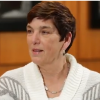What roles do instructors and peers enact in a writing MOOC? How does the use of this environment change the way instructors and students interact with course content?
Roles of Teachers and Learners in a Writing MOOC
Doug Hesse, in "Learning to Write with 67,259 Others" (2013), observed, "Traditionally, of course, giving feedback has been the role of writing teachers; in fact, I'd call it the main role, with well over half the hours that one spends teaching writing devoted to giving feedback" (para. 6). He explained that the challenge for him in thinking about MOOCs was that "if practice and feedback truly matter" (para. 7), what happens in a course with tens of thousands of students where the professor is not central, necessarily, to that feedback? Hesse noted, "In traditional classes, even traditional classes taught online, peer response is but one aspect of feedback; the teacher has a vital, even central role, but in the Duke MOOC (and many like it), feedback and evaluation are entirely ceded to peers" (para. 11). Hesse admitted that even he would be challenged in a role where he was "serv[ing] considerably more as clockmaker god than as traditional reader, coach, critic, collaborator, and advisor" (para. 12). In the conversation below, our interviewees consider the many roles they have played participating in, facilitating, and delivering MOOCs.
 Kay Halasek: In terms of instructor to student relationships, clearly the MOOC doesn't allow us, as I mentioned earlier, to function with the same set of assumptions about what our roles are going to be in the classroom. Right? The MOOC as classroom. And so I think very early on we recognized that we were just one of … these multiple voices: these tens of thousands of voices that were participating in the process of learning and of practicing writing. And I found that very liberating [that I] wasn’t the focus of the classroom; I wasn't the focus of instruction.
Kay Halasek: In terms of instructor to student relationships, clearly the MOOC doesn't allow us, as I mentioned earlier, to function with the same set of assumptions about what our roles are going to be in the classroom. Right? The MOOC as classroom. And so I think very early on we recognized that we were just one of … these multiple voices: these tens of thousands of voices that were participating in the process of learning and of practicing writing. And I found that very liberating [that I] wasn’t the focus of the classroom; I wasn't the focus of instruction.
So, I have this picture in the book that I like to show of a dance recital, and there are two little girls and in one case there are four little girls, and they are doing the same dance moves except one of them is not. One of them is sneaking a look over at her fellow performer/learner because she’s not on the right foot. […] For that moment, that’s peer scaffolding. […]
So, what Vygotsky is trying to tell us in this concept of peer scaffolding and the broader phenomenon that he calls the zone of proximal development is that when those learners are working together on the stage they are all capable of more than they would be working alone soloing on that stage because the mere environment of having co-learners in close proximity identifying each other means there that there are learning resources provided in those interactions.
I like to emphasize in that dance recital how in just a few measures determine the role of the more capable peer. It's not like we have strict hierarchies, where we have this person is always going to be ahead of this person. It’s an ongoing scene of action, where I'm more proficient a little bit at this moment, and maybe I need a little help in this moment. That's why you have to be constantly monitoring and status checking to make that peer scaffolding work.
The people who are most expert at this are early childhood teachers. They set their learning environments up this way; they are activity centers. And they set them up with clear lines of sight on purpose so the kids can use each other as the primary resource for solving problems and resolving little ambiguities. They don't want 30 kids asking the teacher what to do next, they want to see this person learn from that person learn from that person. For some reason we don't do that once learners become more adult. I don't know what makes us think that mode of learning is invalid.
*Jeff Grabill, Bill Hart-Davidson, and Mike McLeod are co-inventors of Eli Review, a software service that supports peer learning.


 Denise Comer: I wouldn't say that feedback was entirely placed in the hands of the learners…. Ed White, who was our consultant on assessment... we designed really tight rubrics for the drafting phase and the feedback, the revision final evaluation phase. We had a lot of self-reflection and we tried to tightly organize those in terms of at least encouraging learners to provide feedback through a set of questions that we thought were important for helping develop writing projects. Then we modeled peer feedback, or we modeled feedback practices through Google Hangouts that were recorded and then posted on YouTube and they could watch a facilitated version of peer feedback. And then we also posted examples of writing with me doing the feedback so they could see a model of what kind of responses might be for the feedback. And yet, still it was uneven. Some learners did that and some didn't.
Denise Comer: I wouldn't say that feedback was entirely placed in the hands of the learners…. Ed White, who was our consultant on assessment... we designed really tight rubrics for the drafting phase and the feedback, the revision final evaluation phase. We had a lot of self-reflection and we tried to tightly organize those in terms of at least encouraging learners to provide feedback through a set of questions that we thought were important for helping develop writing projects. Then we modeled peer feedback, or we modeled feedback practices through Google Hangouts that were recorded and then posted on YouTube and they could watch a facilitated version of peer feedback. And then we also posted examples of writing with me doing the feedback so they could see a model of what kind of responses might be for the feedback. And yet, still it was uneven. Some learners did that and some didn't. Pat James: I think you have to go at it with that idea, that it isn't traditional education; it's providing information and some interaction and educational experience for people, but it's not what we would usually consider working with students... We did get to know students; some students, not all students, but we did get to know some who were really involved in the discussions, and I think you need to make sure that that interaction is built in, that you expect students to be interactive. Sometimes students even get into traditional online courses and they don't realize that they're supposed to be talking to each other, that you're going to require them to talk to each other.
Pat James: I think you have to go at it with that idea, that it isn't traditional education; it's providing information and some interaction and educational experience for people, but it's not what we would usually consider working with students... We did get to know students; some students, not all students, but we did get to know some who were really involved in the discussions, and I think you need to make sure that that interaction is built in, that you expect students to be interactive. Sometimes students even get into traditional online courses and they don't realize that they're supposed to be talking to each other, that you're going to require them to talk to each other. Bill Hart-Davidson: Eli* is certainly created with at least a piece of this problem in mind. And that is […] if we think about the underlying theory of how we learn from peers, from Vygotsky the notion of peer scaffolding, it really hinges upon one very important thing. I mentioned this before, but I’ll say it again in the theory language and that is peer scaffolding requires that you first be able to identify with a more capable peer. So you have to look around and see someone who is a co-learner, someone who is trying to learn something that you are and who is slightly more proficient than you are at that moment. They don’t have to be better than you forever.
Bill Hart-Davidson: Eli* is certainly created with at least a piece of this problem in mind. And that is […] if we think about the underlying theory of how we learn from peers, from Vygotsky the notion of peer scaffolding, it really hinges upon one very important thing. I mentioned this before, but I’ll say it again in the theory language and that is peer scaffolding requires that you first be able to identify with a more capable peer. So you have to look around and see someone who is a co-learner, someone who is trying to learn something that you are and who is slightly more proficient than you are at that moment. They don’t have to be better than you forever. Jeffrey Grabill: I think we met a lot of expectations for our learners. [There's a] metaphor that Julie [Lindquist] uses which makes sense for a lot of our learners, and I think for a lot of learners in MOOCs. We had a number of learners who are like people who play the guitar or drums in the basement and then all of a sudden they had a band, and they thought, "Oh, this is cool." For them, the MOOC experience was about writing together with others, engaging with other writers, and making things together in ways which exceeded and went around what we gave them to do in the MOOC. I think that's also very normal and an expectation. We thought about it in this way up front, but it struck us how it was adult free-choice learning experience.
Jeffrey Grabill: I think we met a lot of expectations for our learners. [There's a] metaphor that Julie [Lindquist] uses which makes sense for a lot of our learners, and I think for a lot of learners in MOOCs. We had a number of learners who are like people who play the guitar or drums in the basement and then all of a sudden they had a band, and they thought, "Oh, this is cool." For them, the MOOC experience was about writing together with others, engaging with other writers, and making things together in ways which exceeded and went around what we gave them to do in the MOOC. I think that's also very normal and an expectation. We thought about it in this way up front, but it struck us how it was adult free-choice learning experience. Steve Krause: It seems to me that the best, most likely use for MOOCs, especially in the fields that we are working in is as a textbook. What's a textbook? A textbook is some kind of container of information put together by an expert that is delivered to people teaching courses, often time for the first time. People who are more experienced teachers, for example a class like first-year composition, often don't even bother with a textbook because they don't really need to. But it is delivered to help students and teachers navigate through a course. Well, that is essentially all a MOOC is.
Steve Krause: It seems to me that the best, most likely use for MOOCs, especially in the fields that we are working in is as a textbook. What's a textbook? A textbook is some kind of container of information put together by an expert that is delivered to people teaching courses, often time for the first time. People who are more experienced teachers, for example a class like first-year composition, often don't even bother with a textbook because they don't really need to. But it is delivered to help students and teachers navigate through a course. Well, that is essentially all a MOOC is.